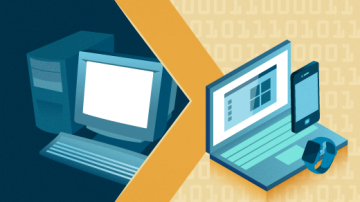The Linux kernel is turning 30 this year! If you're like us, that's a big deal and we are celebrating Linux this week with a couple of special posts.
Today we start with a roundup of responses from around the community answering "What Linux kernel module can you not live without? And, why?" Let's hear what these 10 enthusiasts have to say.
I guess some kernel developers will run away screaming when they hear my answer. Still, I list here two of the most controversial modules:
- First is NVIDIA, as I have an NVIDIA graphics card on my work laptop and my personal desktop.
- The other one probably generates less hatred—the VMNET and VMMON modules from VMware to be able to run VMware Workstation. —Peter Czanik
My favorite is the zram module. It creates a compressed block device in memory, which can then be used as a swap partition. Using a zram-based swap partition is ideal when memory is limited (for example, on virtual machines) and if you are worried about wearing out your SSD or, even worse, your flash-based storage because of frequent I/O operations. —Stephan Avenwedde
The most useful kernel module is definitively snd-hda-intel since it supports most integrated sound cards. I listen to music while coding an audio sequencer on the Linux desktop. —Joël Krähemann
My laptop would be worthless without the kmod-wl that I generate with the Broadcom file. I sometimes get messages about tainting the kernel, but what good is a laptop without wireless? —Gregory Pittman
I can't live without Bluetooth. Without it, my mouse, keyboard, speakers, and headset would be doorstops. —Gary Smith
I'm going to go out on a limb and say all of them. Seriously, we've gotten to the point where I grab a random piece of hardware, plug it in, and it just works.
- USB serial adapter just works
- Video card just works (though maybe not at its best)
- Network card just works
- Sound card just works
It's tough not to be utterly impressed with the broad scope of the driver work that all the modules bring to the whole. I remember the bad old days when we used to yell out xrandr magic strings to make projectors work, and now—yeah, it's a genuine rarity when stuff doesn't (mostly) just work.
If I had to nail it down to one, though, it'd be raid6. —John 'Warthog9' Hawley
I'm going to go back to the late 1990s for this one. I was a Unix systems administrator (and double duty as IS manager) for a small company. Our tape backup system died, and because of "small company" limited budgets, we didn't have a rush replacement or onsite repair on it. So we had to send it in for repair.
During those two weeks, we didn't have a way to make tape backups. No systems administrator wants to be in that position.
But then I remembered reading the Floppy Tape How-to, and we happened to have a tower PC we'd just replaced that had a floppy tape drive.
So I reinstalled it with Linux, set up the ftape kernel driver module, ran a few backup/recovery tests, then ran our most important backups to QIC tapes. For those two weeks, we relied on ftape backups of critical data.
So to the unsung hero out there who made floppy tape drives work on 1990s Linux, you are awesome! —Jim Hall
Well, that's easy. It's the kvm kernel modules. On a personal front, I cannot imagine doing my day-to-day work without VMs. I'd like to believe that's the case with most of us. The kvm modules also play a big part in making Linux central to the cloud strategy. —Gaurav Kamathe
For me, it's dm-crypt, which is used for LUKS. See:
- https://www.redhat.com/sysadmin/disk-encryption-luks
- https://manpages.debian.org/unstable/cryptsetup-bin/cryptsetup.8.en.html
It's fantastic to know others cannot see what's on your disk, for example, if you lose your notebook or it gets stolen. —Maximilian Kolb
For cryptography basics, it's hard to beat the crypto module and its C API, which is straightforward.
For day-to-day life, is there anything more valuable than the plug-and-play that Bluetooth provides? —Marty Kalin
Share with us in the comments: What Linux kernel module can you not live without?










1 Comment